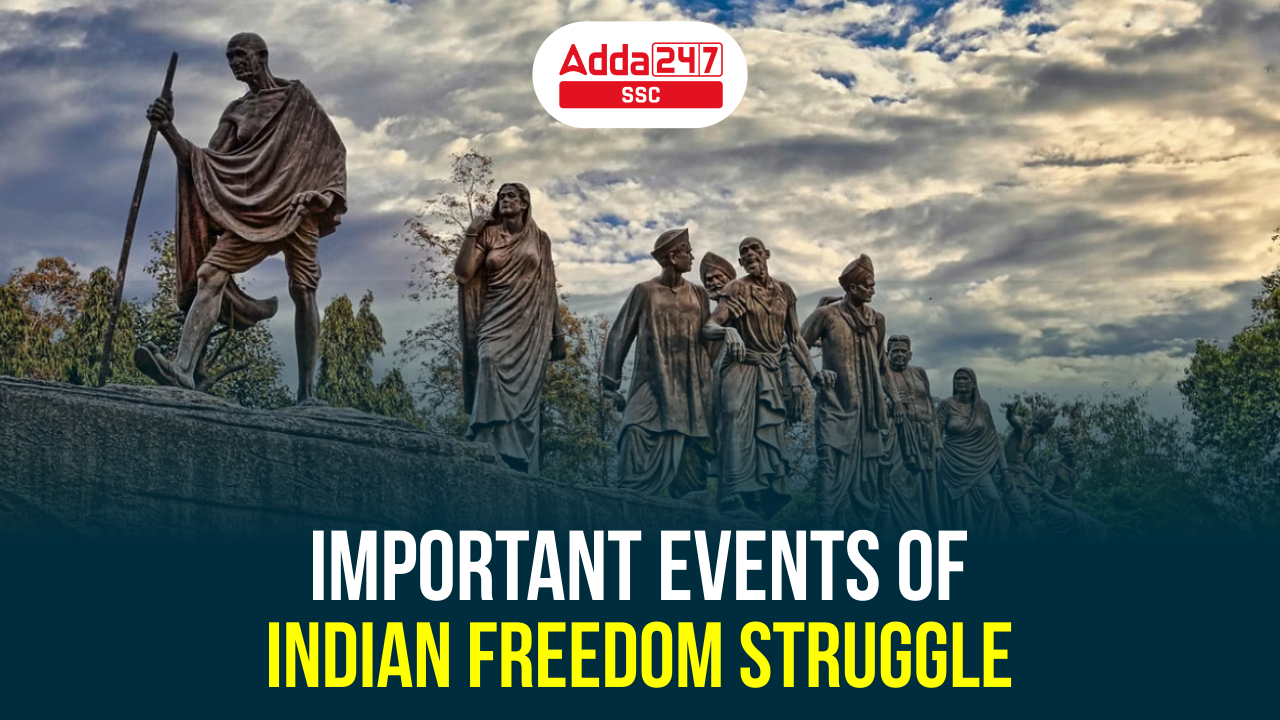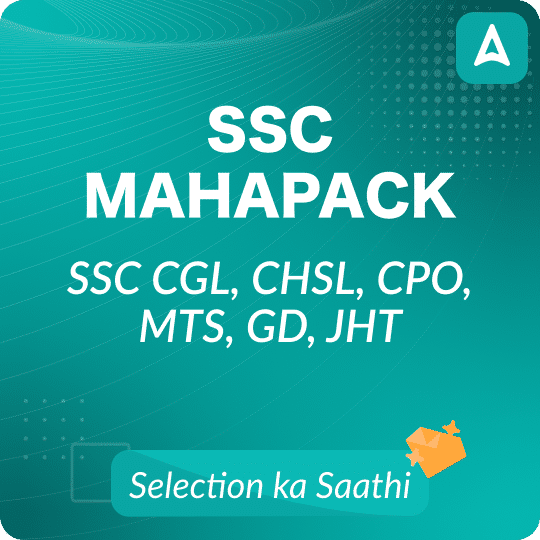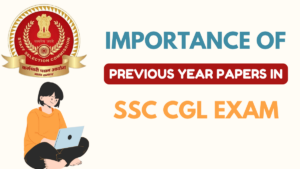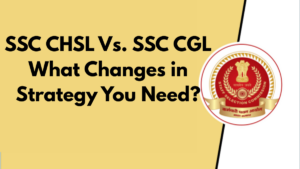India’s journey to freedom is an amazing story of courage and determination. This article will take you through some of the most important events that shaped India’s fight for independence. Candidates who are preparing for a government job examinations like SSC, Railways, or Defence, must have information about these important events because questions about India’s freedom struggle are asked frequently in these examinations. Lets discuss some of the important events of India’s freedom struggle.
Chronology of Events
The journey towards India’s independence began with the Revolt of 1857 or the Sepoy Mutiny. This was the first major attempt by Indians to challenge British rule. Although it didn’t succeed, it laid the groundwork for future resistance against colonial control. The political aspect of the independence struggle took shape in 1885 when Allan Octavian Hume founded the Indian National Congress (INC). This organization was created to represent Indian interests and push for more self-governance within the British Empire. The INC quickly became the primary platform for the independence movement, bringing together leaders and activists who shared the goal of freeing India from British rule. Lets discuss the events that provide momentum for independence struggle and ultimately leading to India’s freedom in 1947.
Formation of All-India Muslim League(1906):
- On 30th December 1906 Muslim league was formed under the leadership of Aga Khan, the Nawab of Dhaka, and Nawab Mohsin-ul-Mulk to safeguard the rights of Indian Muslims. Factors that promote the Muslim league are – the British Plan, Lack of Education, Loss of Sovereignty by Muslims, Expression of Religious Colour, and Economic backwardness of India.
Minto-Morley Reforms(Indian Councils Act 1909):
- The Indian Councils Act 1909 Morley-Minto Reforms or Minto-Morley Reforms was passed by the British Parliament in 1909 in an attempt to widen the scope of legislative councils, placate the demands of moderates in the Indian National Congress, and to increase the participation of Indians the governance. This act got royal assent on 25 May 1909.
Delhi Durbar(1911):
- In 1911 King George V paid a visit to India. Darbar was held to commemorate the coronation of King George V and Queen Mary as Emperor and Empress of India.
- The King declared that the Capital of India would be transferred from Calcutta to Delhi.
Formation of The Ghadar Party In San Francisco (1913):
- The Ghadar Party was an organization founded by Punjabis, principally Sikhs in the United States and Canada with the aim of securing India’s independence from British rule.
- The founding president of the Gadar Party was Sohan Singh Bhakna and Lala Hardayal was the co-founder of this party.
Indian Home Rule League (1916):
- The Indian Home Rule movement was a movement in British India along the lines of the Irish Home Rule movement and other home rule movements.
- The movement lasted around two years between 1916–1918 and is believed to have set the stage for the independence movement under the leadership of Annie Besant all over India whereas B. G. Tilak’s participation was limited to western India only.
- Indian Home Rule League of Tilak was launched in April 1916, while the Home Rule League of Annie Besant came into existence in September that year.
Lucknow Pact(1916):
- Lucknow Pact, (December 1916), an agreement made by the Indian National Congress headed by Maratha leader Bal Gangadhar Tilak and the All-India Muslim League led by Muhammad Ali Jinnah; it was adopted by the Congress at its Lucknow session on December 29 and by the league on Dec. 31, 1916.
- The meeting at Lucknow marked the reunion of the moderate and extremist wings of the Congress.
Champaran Satyagraha(1917):
- The Champaran Satyagraha of 1917, in the Champaran district of Bihar, India during the period of the British Raj, was the first Satyagraha movement inspired by Mohandas Gandhi and a major revolt in the Indian Independence Movement.
- The Champaran Satyagraha of 1917 was Mahatma Gandhi’s first Satyagraha.
- This movement was against the Tinakathia system. Under the tinakathia system, the peasants were bound to plant 3 out of 20 parts of their land with indigo for their landlord.
Montague-Chelmsford Reforms introduced(1919) :
- The Montagu–Chelmsford Reforms or Mont-Ford Reforms were reforms introduced by the British colonial government in India to introduce self-governing institutions gradually to India. The reforms take their name from Edwin Samuel Montagu, the Secretary of State for India during the latter parts of World War I, and Lord Chelmsford, Viceroy of India between 1916 and 1921
- The important features of this act were as follows
a) The Central Legislative Council was now to consist of two houses- The Imperial Legislative and the Council of States) The provinces were to follow the Dual Government System or Dyarchyc) The secretary of state and the governor-general could interfere in respect of “reserved” subjects while in respect of the “transferred” subjects; the scope for their interference was restricted.
Jallianwala Bagh massacre at Amritsar(1919):
- On April 13, 1919, which happened to be ‘Baisakhi’, one of Punjab’s largest religious festivals, fifty British Indian Army soldiers, commanded by Brigadier-General Reginald Dyer, began shooting at an unarmed gathering of men, women, and children without warning
Non-Cooperation Movement (1920):
- It was led by Mohandas Karamchand Gandhi after the Jallianwala Bagh Massacre
- It aimed to resist British rule in India through non-violence means, “Ahimsa”
- The ideas of Ahimsa and nonviolence, and Gandhi’s ability to rally hundreds of common citizens towards the cause of Indian independence, were first seen on a large scale in this movement through the summer of 1920
Khilafat Movement launched(1920):
- The Khilafat movement (1919-1924) was an agitation by Indian Muslims allied with Indian nationalism in the years following World War I.
- Its purpose was to pressure the British government to preserve the authority of the Ottoman Sultan as Caliph of Islam following the breakup of the Ottoman Empire at the end of the war.
Moplah rebellion in Malabar(1921):
- The Moplah Rebellion or the Malabar Rebellion was an extended version of the Khilafat Movement in Kerala in 1921.
- The Government had declared the Congress and Khilafat meetings illegal. So, a reaction in Kerala began against the crackdown of the British in Eranad and Valluvanad taluks of Malabar.
Chauri-Chaura Incident(1922):
- The Chauri Chaura incident occurred at Chauri Chaura in the Gorakhpur district of the United Province, (modern Uttar Pradesh) in British India on 5 February 1922, when a large group of protesters, participating in the Non-cooperation movement.
- The incident led to the deaths of three civilians and 22 or 23 policemen. Mahatma Gandhi, who was strictly against violence, halted the Non-cooperation Movement on the national level on 12 February 1922, as a direct result of this incident
Formation Of Swaraj party (1923):
- The Swaraj Party or the Congress-Khilafat Swarajya Party was formed on 1 January 1923 by C R Das and Motilal Nehru formed in India in January 1923 after the Gaya annual conference in December 1922 of the National Congress
- C R Das was the President and the Secretary was Motilal Nehru.
- Prominent leaders of the Swaraj Party included N C Kelkar, Huseyn Shaheed Suhrawardy, and Subhash Chandra Bose
Simon Commission (1927):
- The Indian Statutory Commission, commonly referred to as the Simon Commission was a group of seven British Members of Parliament of the United Kingdom under the chairmanship of Sir John Allsebrook Simon assisted by Clement Attlee
- The commission arrived in British India in 1928.
- The commission was boycotted by the Indian National Congress and most other Indian political parties because Indians were excluded from the commission
- In response to the Simon Commission’s failure to include Indian members, the Indian National Congress drafted the Nehru Report in 1928, outlining their vision for constitutional reforms in India. This report played a significant role in the subsequent discussions on Indian autonomy.
Bardoli Satyagraha(1928):
- The Bardoli Satyagraha, 1928 was a movement in the independence struggle led by Sardar Vallabhai Patel for the farmers of Bardoli against the unjust raising of taxes
Central Assembly Bombed by Bhagat Singh and Batukeshwar Dutt(1929):
- In order to court arrest, Shaheed Bhagat Singh and Batukeshwar Dutt threw political handouts and smoke bombs at the Delhi Central Legislative Assembly
- The aim behind the bombing was not to cause harm but to protest against the passing of two repressive bills, the Public Safety Bill and the Trade Dispute Bill
The Civil Disobedience Movement/Salt Satyagraha(1930):
- Salt March, also called Dandi March or Salt Satyagraha, major nonviolent protest action in India led by Mohandas (Mahatma) Gandhi in March–April 1930.
- The march was the first act in an even larger campaign of civil disobedience (satyagraha) Gandhi waged against British rule in India that extended into early 1931 and garnered Gandhi widespread support among the Indian populace and considerable worldwide attention.
First Round Table Conference(1930):
- The first Round Table Conference convened from 12 November 1930 to 19 January 1931.
- The Round Table Conference was officially inaugurated by His Majesty George V on 12 November 1930, in the Royal Gallery House of Lords in London, and chaired by the British Prime Minister, Ramsay MacDonald.
- Congress did not participate in the first conference, but representatives from all other Indian parties and a number of Princes did.
Gandhi–Irwin Pact(1931):
- Gandhi-Irwin Pact, the agreement signed on March 5, 1931, between Mohandas K. Gandhi, leader of the Indian nationalist movement, and Lord Irwin (later Lord Halifax), British viceroy (1926–31) of India.
- It marked the end of a period of civil disobedience (satyagraha) in India against British rule that Gandhi and his followers had initiated with the Salt March(March–April 1930).
Bhagat Singh, Rajguru, and Sukhdev Martyred(1931):
- On March 23, 1931, Bhagat Singh along with his associates Sukhdev Thapar and Shivaram Rajguru were hanged to death for the assassination of 21-year-old British police officer John Saunders.
- The day they were executed is celebrated as Martyrs’ Day throughout the country.
Second Round Table Conference(1931):
- The second session (September–December 1931) was attended by Mahatma Gandhi as the Congress representative.
- It failed to reach an agreement, either constitutionally or on communal representation.
Poona Pact(1932):
- The Poona Pact refers to an agreement between B. R. Ambedkar and M. K. Gandhi on the reservation of electoral seats for the depressed classes in the legislature of the British Indian government.
- The agreement was signed by Pt Madan Mohan Malviya Dr. B. R. Ambedkar and some Dalit leaders at Yerwada Central Jail in Pune, to break Mahatma Gandhi’s fast unto death.
Third Round Table Conference(1932):
- The third Round Table Conference was held in London on 17 November 1932. This was just a nominal conference, Congress refused to attend it.
- The recommendations of this conference were published in a White Paper in 1933 and later discussed in the British Parliament. The recommendations were analyzed and the Government of India Act of 1935 was passed on its basis.
Government of India Act 1935:
- The Government of India Act, of 1935 was passed by British Parliament in August 1935. With 321 sections and 10 schedules, this was the longest act passed by the British Parliament so far and was later split into two parts viz. Government of India Act, 1935, and Government of Burma Act, 1935.
- Salient Features of the Government of India Act 1935 were as follows:
- Abolition of provincial dyarchy and introduction of dyarchy at the center.
- Abolition of the Indian Council and introduction of an advisory body in its place.
- Provision for an All India Federation with British India territories and princely states.
- Elaborate safeguards and protective instruments for minorities.Supremacy of British Parliament.
- Increase in the size of legislatures, an extension of the franchise, division of subjects into three lists, and retention of the communal electorate.
- Separation of Burma from India.
All India Forward Bloc Established by Subhas Chandra Bose(1939):
- The All India Forward Bloc (AIFB) is a left-wing nationalist political party in India.
- It emerged as a faction within the Indian National Congress in 1939, led by Subhas Chandra Bose.
Lahore Resolution(1940):
- The All-India Muslim League met in Lahore in March 1940. The League adopted a resolution that has become known as the Lahore Resolution.
- March 23, the date on which this Resolution was adopted, is celebrated in Pakistan every year.
- The resolution was presented at Minto Park (now renamed ‘Iqbal Park’), in Lahore, by Maulvi A.K. Fazlul Huq on the instructions of the Working Committee.
August Offer(1940):
- On 8 August 1940, early in the Battle of Britain, the Viceroy of India, Lord Linlithgow, made the so-called “August Offer”, a fresh proposal promising the expansion of the Executive Council to include more Indians, the establishment of an advisory war council, giving full weight to the minority opinion, and the recognition of Indians’ right to frame their own constitution (after the end of the war).
- In return, it was hoped that all parties and communities in India would cooperate in Britain’s war effort.
Cripps Mission(1942):
- The mission was headed by a senior minister Sir Stafford Cripps, Lord Privy Seal, and leader of the House of Commons.
- The Cripps Mission was a failed attempt in late March 1942 by the British government to secure full Indian cooperation and support for their efforts in World War II.
Quit India Movement(1942):
- The Quit India Movement or the India August Movement, was a movement launched at the Bombay session of the All-India Congress Committee by Mahatma Gandhi on 8 August 1942, during World War II, demanding an end to British Rule of India.
- On 8th August 1942, Gandhi made a call to Do or Die in his Quit India speech delivered in Bombay at the Gowalia Tank Maidan.
Indian National Army(1942):
- The Indian National Army (INA) was originally founded by Capt Mohan Singh in Singapore in September 1942 with Japan’s Indian POWs.
- The idea of a liberation army was revived with the arrival of Subhas Chandra Bose in the Far East in 1943. In July, at a meeting in Singapore, Rash Behari Bose handed over control of the organization to Subhas Chandra Bose.
- At its height, it consisted of some 85,000 regular troops, including a separate women’s unit, the Rani of Jhansi Regiment ( named after Rani Lakshmi Bai), which is seen as a first of its kind in Asia.
Wavell Plan/Simla Conference(1945):
- Lord Wavell who had succeeded Lord Linlithgow as Governor-General in October 1943, made a way out from the existing stalemate the deadlock in India.
- He broadcast to the people of India the proposals of the British Government to resolve the deadlock in India on 14th June which is called the Wavell Plan. It is also known as the Breakdown Plan.
- Lord Wavell invited a conference of 21 Indian Political leaders at the Summer Capital of the British Government Shimla to discuss the provision of the Wavell Plan.
- The discussion was stuck at a point of selection of Muslim representatives.
Cabinet Mission Plan(1946)
- The United Kingdom Cabinet Mission of 1946 to India aimed to discuss the transfer of power from the British government to the Indian leadership, with the aim of preserving India’s unity and granting it independence.
- Formulated at the initiative of Clement Attlee, the Prime Minister of the United Kingdom, the mission had Lord Pethick-Lawrence, the Secretary of State for India, Sir Stafford Cripps, President of the Board of Trade, and A. V. Alexander, the First Lord of the Admiralty.
Indian Independence Act 1947:
- The Indian Independence Act of 1947 is an Act of the Parliament of the United Kingdom that partitioned British India into the two new independent dominions of India and Pakistan.
- The legislation was formulated by the government of Prime Minister Clement Attlee and the Governor General of India Lord Mountbatten, after representatives of the Indian National Congress, the Muslim League, and the Sikh community came to an agreement with Lord Mountbatten on what has come to be known as the 3 June Plan or Mountbatten Plan.
- This plan was the last plan for independence.
| Check Related posts: | |
| State and Capitals in India | 8 Union Territories in India |
| Dams In India | Largest State of India |




 Importance of Solving Previous Year Pape...
Importance of Solving Previous Year Pape...
 SSC CHSL Vs. SSC CGL – What Changes in S...
SSC CHSL Vs. SSC CGL – What Changes in S...
 RRB ALP Preparation Strategy 2025, Tips ...
RRB ALP Preparation Strategy 2025, Tips ...


